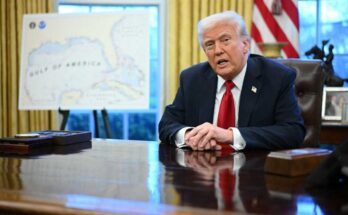The recent announcement from the U.S. Department of Health and Human Services (HHS) regarding the withdrawal of $11.4 billion in COVID-19-related funding has sent shockwaves through state and local health departments across the nation. This decision marks a significant shift in public health strategy as the government declares that “the COVID-19 pandemic is over” and aims to redirect resources towards addressing chronic diseases and other health priorities.
Background on Funding Allocations
Initially, these funds were allocated during the height of the COVID-19 pandemic to support various public health initiatives, including testing, vaccination efforts, and programs aimed at addressing health disparities among vulnerable populations. The funding was crucial for state and local health departments as they navigated unprecedented challenges posed by the virus, which has claimed over 1.2 million lives in the United States alone.
Reasons Behind the Cuts
According to HHS officials, the rationale behind these cuts is rooted in a belief that the immediate need for pandemic-related funding has diminished. Andrew Nixon, HHS Director of Communications, stated that “HHS will no longer waste billions of taxpayer dollars responding to a non-existent pandemic that Americans moved on from years ago”. This perspective reflects a broader political agenda under the Trump administration aimed at reducing federal spending across various sectors.
Impacts on Public Health Infrastructure
The abrupt termination of these funds is expected to have far-reaching consequences for public health infrastructure. Many state health departments had already integrated these funds into their operational budgets, using them not only for COVID-19 response but also for other critical public health functions such as disease surveillance and immunization programs. For instance, wastewater surveillance initiated during the pandemic has proven valuable for tracking other infectious diseases like measles and flu.
Health officials are voicing concerns about how these cuts will affect their ability to respond to current and future public health crises. In states like Minnesota, officials reported losing approximately $226 million in grants related to ongoing COVID-19 work. Similarly, California’s Department of Public Health indicated that it would lose significant funding essential for respiratory virus monitoring and vaccination efforts.
Reactions from Health Officials
Public health leaders across various states have expressed alarm at the sudden nature of these cuts. Lori Freeman, CEO of the National Association of County & City Health Officials, described it as “cruel and unusual behavior,” especially given that much of this funding was set to end soon anyway. Dr. Brooke Cunningham from Minnesota’s Department of Health emphasized that this loss represents a tremendous setback amid ongoing public health challenges.
Moreover, experts warn that cutting back on public health funding could leave communities more vulnerable not just to infectious diseases but also to chronic conditions exacerbated by inadequate healthcare resources.
Conclusion
The decision to rescind $11.4 billion in COVID-19 funding signifies a pivotal moment in U.S. public health policy. As state and local agencies brace for potential layoffs and program cuts, there is growing concern about how this will impact overall community health resilience moving forward. The long-term implications remain uncertain as officials assess how best to navigate this new landscape without critical federal support.

